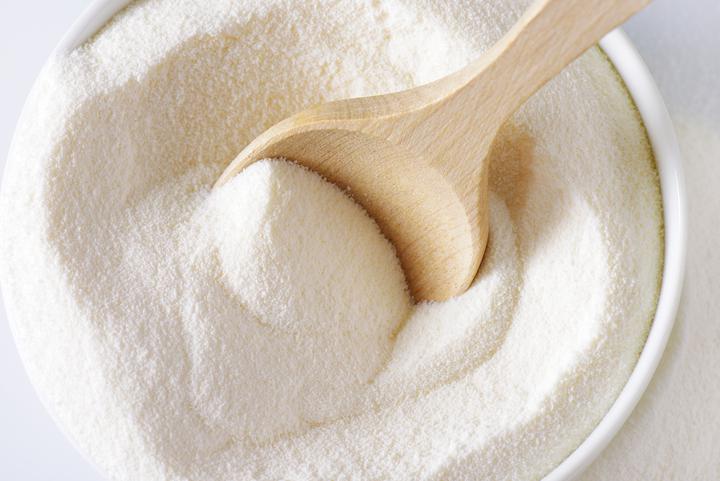Whey, also called milk serum, is a liquid dairy produce obtained while manufacturing cheese, casein or similar products by separating milk from the curds. Whey contains half the dry extract of milk (lactose, milk soluble proteins and minerals).
Many purposes exist for whey either in human food or in animal feeding. Nonetheless, its 94% of water content, its high salinity level and its capacity to alter easily make it hard to promote its liquid form.
On the contrary its dehydrated form offers many possibilities. Nowadays, thanks to technical progresses, one can distinguish between whey according to liquid acidity: above or below 1,8g of lactic acid for one litre.
A specific whey may be associated to a specific cheese and to a specific manufacturing step.
Sweet whey is derived from:
- Pressed cheese manufacturing either cooked or uncooked like Emmental, Comté or Edam
- Rennet casein manufacturing
Whey powder is obtained by coagulating milk with rennet or enzymes of rennet. It gives flabby, gelatinous and impermeable curds. Whey is then skimmed and dried.
Sweet whey acidity ranges from 15 to 22° Dornic (around 6,5 pH).
Acid whey comes from:
- Soft white cheese manufacturing such as ricotta, mascarpone, Petit Suisse cheese
- Acid casein
Acid whey is made from milk coagulation with acidifier. Brittle, firm and permeable curds are then produced.
Acid whey powder is manufactured by drying fresh whey obtained from soft white cheese,. Microbial fermentation lowers milk pH and changes lactose into lactic acid.
Lactose content of acid whey powder is lower than sweet whey powder. Its acid number is higher, it has, as a result, a more acidic taste than sweet whey.
Acid whey from casein manufacturing is obtained by forming a precipitate of casein in sulphuric acid
Acid whey acidity reaches 120° Dornic (around 4,5 pH)
Demineralised whey powder is produced by removing water (spray drying) and by selectively extracting most of the minerals from sweet liquid whey.
Demineralised whey contains lactose and serum proteins with high nutritional value. When it is 90% demineralised, it is used for infant food. Demineralised whey helps standardise the serum protein, lactose and mineral contents of infant formula to be closer to breast milk composition.
